Author: Sun Weiqing
Poverty eradication is an important issue for human development. What challenges and opportunities do international poverty reduction governance mechanisms face?
Poverty eradication is an important issue for human development. In 1992, the United Nations designated October 17 every year as the International Day for the Eradication of Poverty. Eradicating poverty in all its forms is also the primary goal among the 17 goals of the 2030 Agenda for Sustainable Development. The framework for coordinating global poverty reduction governance includes international organizations, agreements, rules, systems and mechanisms, which are designed to promote transnational cooperation and coordination in poverty reduction and play a vital role in reducing and ultimately eliminating poverty. 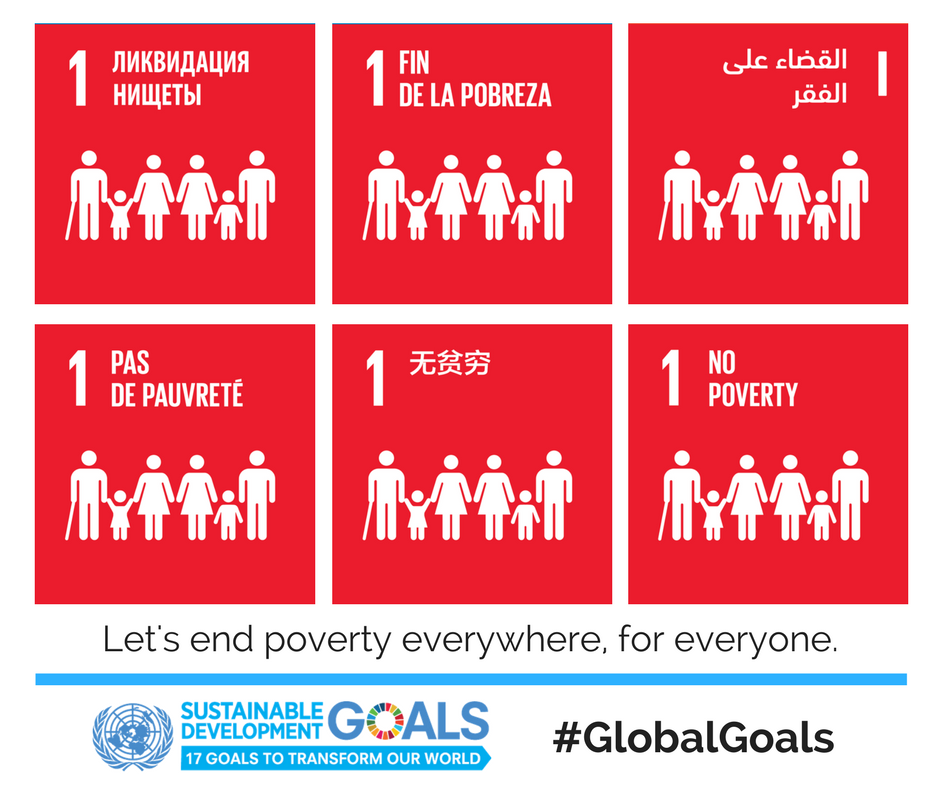
(UN/Image)
How to define poverty?
Poverty is a state of being unable to obtain the resources and services necessary to meet basic needs of life.Poverty not only manifests as material poverty related to material resources such as lack of food, housing, and clothing, but also manifests as non-monetary poverty such as "the inability to fully obtain education and other basic public services, social discrimination and exclusion, and the inability to participate in decision-making."
The international poverty line is the authoritative measure of global poverty. Countries set national poverty lines based on their national conditions to measure poverty at the national level. Countries have different levels of development, and the content covered by their national poverty lines is also different. To facilitate cross-country comparisons, the international poverty line regularly formulated by the World Bank has become the authoritative standard for measuring the extent of global poverty. The World Bank's calculation measures the resources needed to meet people's minimum nutritional, clothing and housing needs (i.e. total daily income or total expenditure per person in a household), meaning people who earn less than the international poverty line on a daily basis are in extreme poverty. This method uses the national poverty lines of the 15 poorest countries as a basis, calculates the monetary value of the international poverty line, and converts it into other currencies using purchasing power parity (PPP) exchange rates. In 1990, the World Bank proposed the international poverty line of US$1.01 (1985 PPP) for the first time in the World Development Report, that is, people living on less than US$1.01 per day were considered to be living below the extreme poverty line. In 2001, 2009 and 2015, the World Bank raised the international poverty line to US$1.08 per day (1993 PPP), US$1.25 per day (2005 PPP) and US$1.90 per day (2011 PPP) respectively. In May 2020, the World Bank released "Purchasing Power Parities and the Size of World Economies—Results from the 2017 International Comparison Program" (Purchasing Power Parities and the Size of World Economies—Results from the 2017 International Comparison Program), and in September 2022 The global poverty line was updated again in March. Based on 2017 purchasing power parity, the new global poverty line was raised from US$1.90 to US$2.15 per day. Anyone below this standard is considered to be in extreme poverty.
World Bank International Poverty Line (1990-2022)
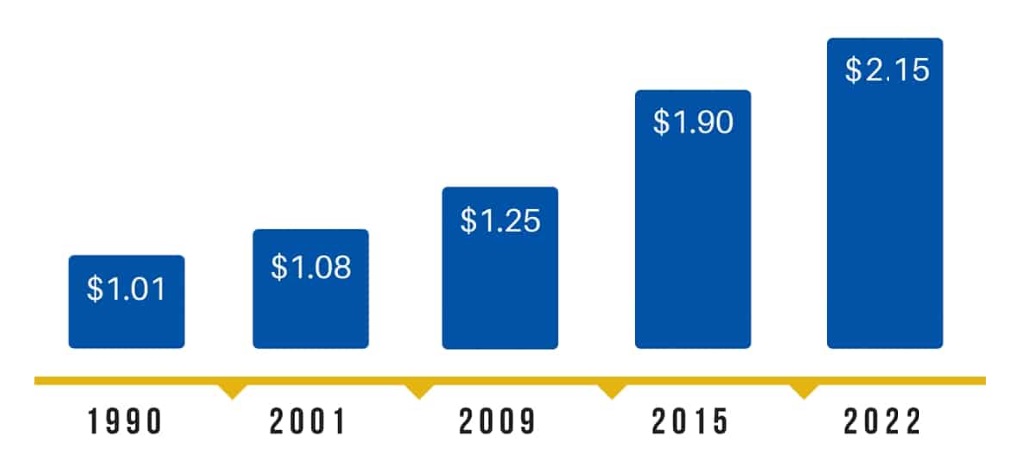
(International Development Watch, World Bank/Photo)
The "Multidimensional Poverty Index" comprehensively measures poverty status from multiple levels. In 2010, the United Nations Development Program and the Poverty and Human Development Project of the University of Oxford in the United Kingdom proposed the "Multidimensional Poverty Index (MPI)" for the first time and included it in the United Nations Development Program's annual Human Development Report. The MPI covers more than 100 developing countries and comprehensively measures poverty levels through 10 main indicators including access to education and health services, living standards such as housing, water, sanitation and electricity. MPI comprehensively reflects the challenges faced by poor people at multiple levels and plays a complementary role in traditional poverty standards measured in monetary terms.
Global Multidimensional Poverty Index: Poverty Dimensions and Indicators
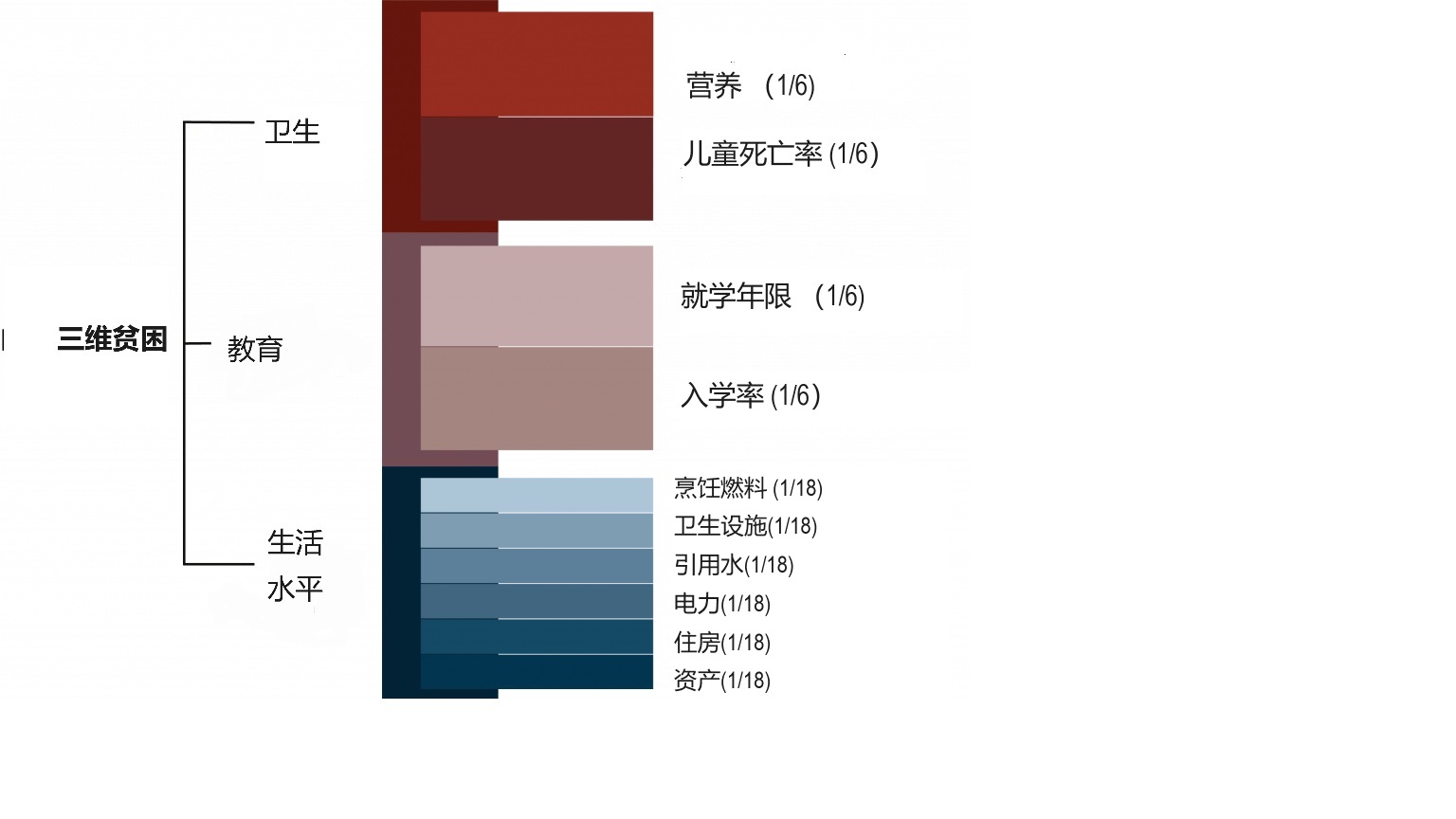 (OPHI/Picture)
(OPHI/Picture)
The advantage of MPI is that it provides a more comprehensive and multi-dimensional poverty measurement method that better reflects people's living conditions and needs. Policymakers can use MPI to more accurately understand the nature of the poverty problem and take targeted measures to reduce poverty.
Which international governance mechanisms and institutions target poverty reduction?
United Nations Sustainable Development Agenda (SDG)is the global agenda for poverty reduction and sustainable development. This framework includes 17 goals and 169 specific indicators, covering poverty reduction, health, education, gender equality, sustainable energy, climate change and other fields. Countries promote the achievement of sustainable development goals such as poverty eradication by formulating national programs and action plans.
World Bank (WBG)multilateral development banksSupport the poverty reduction efforts of developing countries and promote sustainable development by providing loans, technical assistance and policy advice. It also manages a range of poverty reduction and development projects aimed at improving the living conditions of the poor. Regional development banks such as the Asian Development Bank (ADB) and the African Development Bank (AfDB) also provide financial assistance, technical knowledge and policy advice to support poverty reduction efforts in their respective regions, promote private sector development, and support projects aimed at reducing poverty and insecurity. Equality strategic planning.
International Monetary Fund (IMF)It is committed to promoting global financial stability and sustainable development, supporting the economic reforms of member countries by monitoring the global economy, providing fiscal and monetary policy advice, technical assistance, and loans, and indirectly supporting the poverty reduction and economic development efforts of developing countries.
United Nations Development Program (UNDP)Committed to promoting sustainable development and eradicating poverty. By cooperating with governments, we support the formulation and implementation of poverty reduction policies and plans; provide technical assistance and project support to promote sustainable development and improve the quality of life of the poor, and help developing countries achieve sustainable development goals.
United Nations Children's Fund (UNICEF)Committed to protecting and promoting children's rights, we strive to ensure that poor children have access to basic survival needs and provide basic education, health care and nutritional support to help reduce child poverty.
International Labor Organization (ILO)Committed to promoting global labor rights and social justice, we help improve workers' working conditions and promote inclusive growth by formulating international labor standards, providing technical assistance and policy support, and conducting training programs to support global poverty reduction efforts.
Food and Agriculture Organization of the United Nations (FAO)It is a specialized agency within the United Nations system responsible for work in the field of food and agriculture. FAO is committed to increasing agricultural production, improving food security, reducing malnutrition, improving farmers' livelihoods and promoting sustainable agricultural development, and helps poor people in rural areas improve their living conditions through various poverty alleviation projects. In addition, many international foundations and non-governmental organizations are also working on poverty reduction. For example, The Bill and Melinda Gates Foundation, The Rockefeller Foundation, Oxfam, Save the Children, World Vision International) and ActionAid International and other organizations promote global poverty reduction by funding and implementing poverty alleviation projects, providing technical support and policy advocacy, education and skills training, promoting gender equality and protecting the rights and interests of people with disabilities. Chinese social organizations such as the China Association for the Promotion of International Exchange of Non-Governmental Organizations (CNIE), the China Rural Development Foundation (CFRD), and the China Youth Development Foundation (CYDF) also carry out poverty alleviation projects in countries and regions such as Asia and Africa, contributing to the cause of world poverty alleviation. Contribute.
Four Decades of Global Poverty: From Asia to Africa
In the 1990s, poverty was concentrated in Asian countries.. In 1990, 1.9 billion people around the world lived below the extreme poverty line of US$1.90 a day, accounting for 36% of the total population. Among them, 90% of the poor live in low-income countries, more than half of the poor live in East Asia, and another 28% of the poor live in South Asia. 22% of the global poor live in China and India, with 760 million people (65% of the total population) and 406 million people (46% of the total population) respectively. In addition, Indonesia, Pakistan, Bangladesh, Myanmar and Vietnam in Asia are among the top ten poorest countries in the world.
Over the past 30 years, the rise of China and other developing countries in Asia has led to a significant reduction in the number of poor people in the world. In 2015, approximately 729 million people (10% of the world's population) lived below the poverty line of US$1.90 per day, exceeding the Millennium Development Goals (MDGs) target of halving poverty. From 2012 to 2013 alone, the number of poor people worldwide decreased by 130 million. By the end of 2020, China has completely eradicated extreme poverty and completed the poverty reduction goals of the United Nations 2030 Agenda for Sustainable Development 10 years ahead of schedule. According to the World Bank's absolute poverty standard of US$1.9 per person per day, China's poor population has decreased by nearly 800 million in four decades, accounting for 75% of the global poverty reduction in the same period. India's economic growth has also pushed the poverty rate down from 46% in 1990 to 6% in 2019. It is expected that by 2030, India may basically eliminate extreme poverty, while Afghanistan and North Korea have not yet achieved the goal of eliminating extreme poverty.
Now and in the future, poverty is concentrated in sub-Saharan Africa, fragile and conflict-ridden countries. By 2030, nine of the ten countries with the largest number of poor people in the world will be in sub-Saharan Africa. 60% of the world’s poor will live in fragile and conflict-affected countries such as Nigeria, the Democratic Republic of Congo, Mozambique and Somalia. In 2030, global efforts to achieve the Sustainable Development Goals, including ending extreme poverty, will be complicated by fragile and hard-to-reach environments. Poverty will not only be associated with countries, but also with specific regions within countries. Nearly half of the world's poor people will live in middle-income countries, a situation that has changed dramatically from 40 years ago. In 2019, Nigeria surpassed India to become the country with the largest number of poor people in the world. In 2015, the number of poor people in Nigeria reached 80 million, accounting for 11% of the global poor population. By 2030, this number may increase to 107 million people, accounting for 18% of the global poor population.
Map of poverty population in various countries around the world in 2019
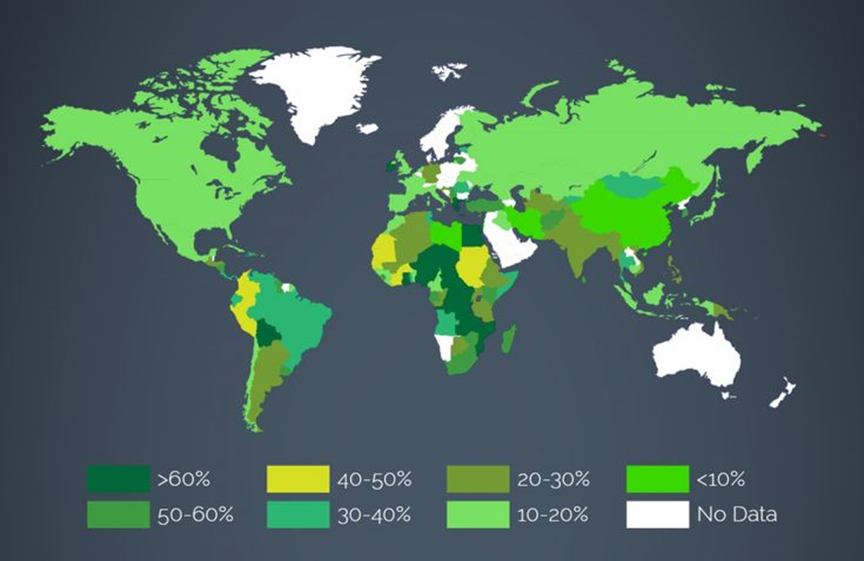 (Getty Images/Picture)
(Getty Images/Picture)
Global poverty reduction suffers setbacks and faces challenges
The "Poverty and Shared Prosperity 2022" report released by the World Bank stated that the new crown epidemic has increased the global extreme poverty rate from 8.4% in 2019 to 9.3% in 2020, indicating that more than 70 million people will be in extreme poverty by the end of 2020. Poverty, the total number of poor people in the world has increased to more than 700 million. Incomes have fallen far more sharply in the world's poorest countries than in rich ones, and global inequality has increased for the first time in decades. The economic recovery from COVID-19 has also been uneven. A rapid recovery is further hampered by the shocks of climate change and rising food and energy prices caused by the Russo-Ukrainian war. United Nations Secretary-General Guterres pointed out that at the current rate of poverty reduction, nearly 500 million people will still be living in extreme poverty by 2030. The International Labor Organization and the United Nations Children's Fund released a report stating that poverty eradication, as an important part of human development, now faces a series of challenges. These challenges reflect the dilemmas and problems faced by the international community in reducing poverty and promoting human development.
Inequality in global economic development is an important factor leading to poverty.Globally, there are huge economic development gaps between different countries and regions, which has led to the exacerbation of the gap between rich and poor and the persistence of poverty. Global economic inequality leads to uneven distribution of resources, making some regions and groups more vulnerable to poverty. Trade barriers, unfair trade agreements, and unequal decision-making systems of international financial institutions all restrict the economic development of developing countries and lead to increased poverty in developing countries. Narrowing the gap between rich and poor is one of the important challenges in poverty reduction.
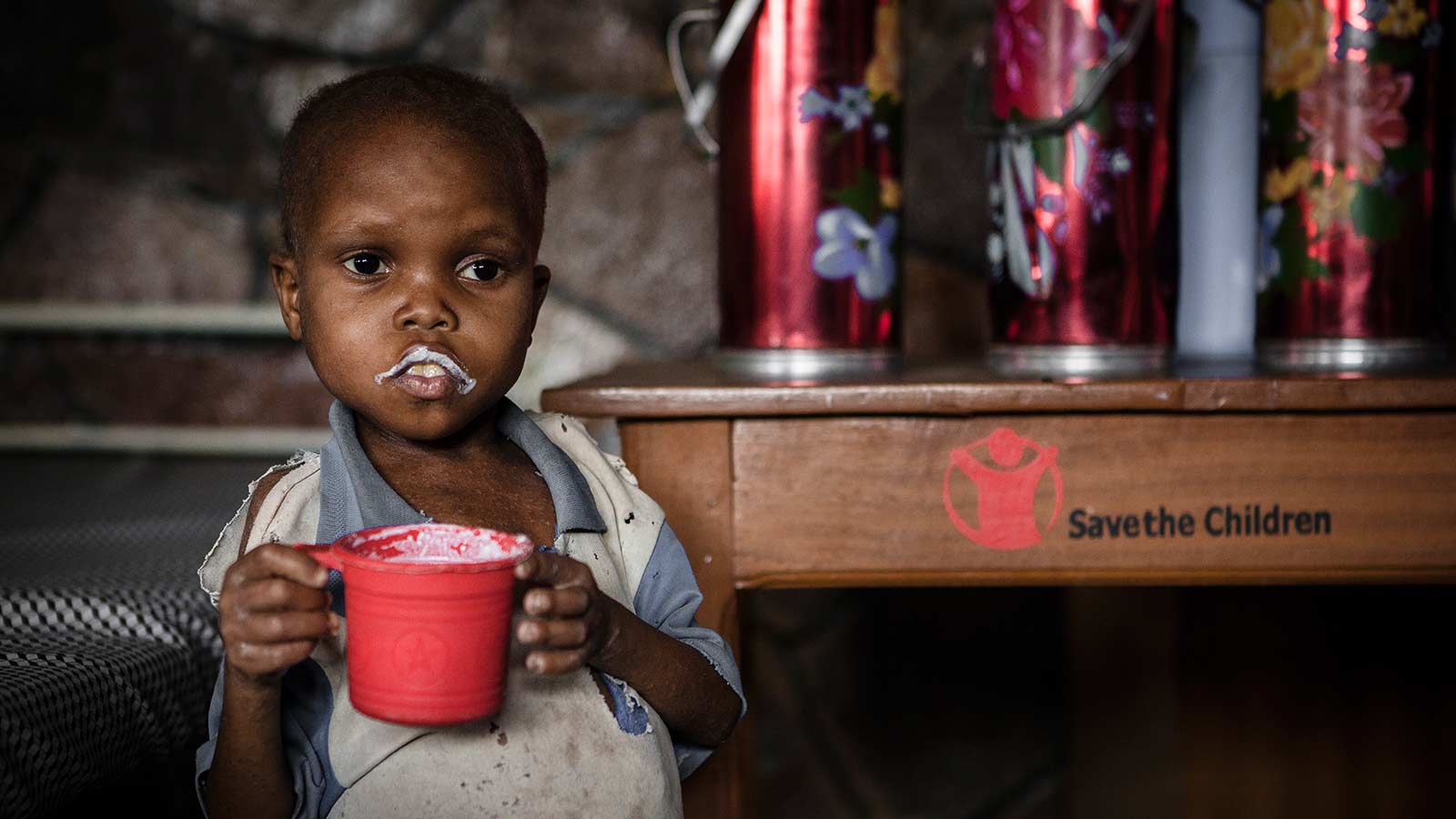 (Save the Children/Photo)
(Save the Children/Photo)
Climate change exacerbates poverty.Extreme weather events, natural disasters and environmental damage caused by climate change have serious impacts on agricultural production, leading to reduced crop yields and rising food prices, which in turn affects the food security of the poor. Climate change affects how diseases spread and expands their spread. Due to poor living conditions and lack of medical resources, poor people are more susceptible to the effects of these diseases, further exacerbating the poverty problem.
Lack of education and skills limits the ability of poor people to escape poverty.People with lower levels of education and skills are often only able to engage in low-skilled, low-income jobs, with limited employment opportunities and difficulty in obtaining stable, high-income jobs to escape poverty. These groups are often marginalized in society and face discrimination and exclusion, which further exacerbates their poverty and makes it difficult for them to integrate into society and have equitable access to opportunities. The lack of education and skills can easily form a vicious cycle of poverty. Poor families are unable to provide good educational resources and environment for their children, making the next generation more likely to fall into poverty and continuing the intergenerational transmission of poverty.
Political conflict and instability exacerbate poverty. Political conflicts and instability around the world are also hampering global efforts to reduce poverty. Geopolitical conflicts such as the Russia-Ukraine war and the Palestinian-Israeli conflict have exacerbated humanitarian crises, making the population in poor areas more fragile and vulnerable. A report released by the United Nations Development Program in 2022 pointed out that the war in Ukraine triggered a surge in global food and energy prices, which directly caused 71 million people in developing countries to fall into poverty just three months later. It can be seen that the impact of conflict and instability on poverty is much faster than the impact of the new coronavirus epidemic.
How can international governance be further strengthened to promote poverty reduction and human development?
Multilateral cooperation and consultation mechanisms in the international governance system enable countries to engage in dialogue and consultation on poverty reduction and human development issues, coordinate resource allocation, and promote policy coordination and knowledge sharing. However, the current international governance structure also has challenges and shortcomings. Some developing countries believe that the decision-making process of the international governance system lacks representation and fairness, and that developed countries have greater say and influence in the decision-making process, resulting in the inability of developing countries to fully protect their interests. The lack of sufficient coordination and cooperation among various institutions and countries has led to resource waste, decision-making conflicts and inefficiency. Some decisions have deviated from the original poverty reduction and sustainable development goals, resulting in uneven resource distribution and poor results. Therefore, reforming the international governance structure and moving it in a more inclusive and democratic direction is one of the important tasks to achieve global poverty reduction and human development goals.
 (UN/Image)
(UN/Image)
Reforming global governance structures: Reforming the global governance structure is the key to strengthening international governance. This includes increasing the representation and voice of developing countries in international institutions and ensuring that the interests of these countries are fully protected and reflected. In addition, reforms should promote more equal and inclusive decision-making processes and ensure the participation of countries in shaping global policies and rules.
Strengthen international cooperation and policy coordination:Poverty reduction and human development are global challenges that require cooperation and policy coordination among countries. The international community should strengthen dialogue and cooperation mechanisms to promote knowledge sharing, experience exchange and the dissemination of best practices. In addition, countries should strengthen policy coordination to ensure that their development policies and actions complement each other and avoid competition and conflict.
Provide adequate funding and resources: To achieve poverty reduction and human development goals, adequate funding and resources need to be provided. The international community should increase assistance and investment in developing countries, especially support for the poorest and least developed countries. For example, the Asian Infrastructure Investment Bank (AIIB) initiated by China focuses on supporting infrastructure construction in Asia and other regions and promoting income growth and poverty reduction. In addition, international financial institutions and private capital flow mechanisms need to be reformed to ensure fair distribution and stable flow of funds and resources.
Strengthen monitoring and evaluation mechanisms: Establishing an effective monitoring and evaluation mechanism is key to ensuring that poverty reduction and human development goals are achieved. The international community should strengthen monitoring and evaluation mechanisms to ensure that countries fulfill their commitments and take actions to promote the realization of the sustainable development goals. This includes establishing specific indicators and evaluation criteria, regular reporting and review of countries’ implementation progress, and providing technical support and capacity building.
Promote sustainable development and inclusive growth: Sustainable development is the foundation for poverty reduction and human development. The international community should strengthen support and promote sustainable development policies and practices in the fields of sustainable energy, environmental protection, sustainable agriculture and urban development. In addition, inclusive growth should be promoted to ensure that economic development benefits everyone and reduces the root causes of poverty and inequality.
Strengthen South-South cooperation and experience sharing: South-South cooperation is a mechanism for cooperation and experience sharing among developing countries. The poverty reduction experience of developing countries has more practical reference significance for other developing countries. The international community should strengthen South-South cooperation and promote experience exchange and technology transfer among developing countries. This will help developing countries better respond to poverty reduction challenges, share successful experiences and best practices, and strengthen the institutionalization and sustainability of South-South cooperation mechanisms. By strengthening international governance, reforming the global governance structure, strengthening international cooperation and policy coordination, providing adequate funds and resources, strengthening monitoring and evaluation mechanisms, and promoting sustainable development and inclusive growth, the international community is expected to better promote poverty reduction and human development process. This requires countries to effectively manage differences and work together to form broad consensus and actions.
References
https://www.worldbank.org/en/news/factsheet/2022/05/02/fact-sheet-an-adjustment-to-global-poverty-lines#10 https://www.un.org/zh/global-issues/ending-povertyhttps://ophi.org.uk/multidimensional-poverty-index/ https://www.undp.org/publications/dfs-human-cost-inaction-poverty-social-protection-and-debt-servicing-2020-2023https://news.un.org/en/ https://unstats.un.org/sdgs/indicators/Global%20Indicator%20Framework%20after%202019%20refinement_Chi.pdfhttps://www.gov.cn/zhengce/2021-04/06/content_5597952.htm https://www.idobserver.org/zh_cn/2020/11/18/%e5%9b%bd%e9%99%85%e8%b4%ab%e5%9b%b0%e7%9a%84%e5%89%8d%e4%b8%96%e4%bb%8a%e7%94%9f/ https://www.futurimmediat.net/news/the-evolution-of-global-poverty-1990-2030 https://in.pinterest.com/pin/468585536228074624/ https://thedocs.worldbank.org/en/doc/f692402b5b3b21154f103ee64c0c551d-0070012022/original/Poverty-Synthesis-Report-cn.pdf
All rights reserved, please indicate the source when citing.

Comment (1)
Shawnda Votta| November 18, 2024
Good blogs thanks